If you’re suffering from knee joint pain as a result of arthritis or injury and other conservative treatment options aren’t providing you with adequate pain relief, then you should consider a Robotic MAKO knee replacement. Melbourne residents can access the advanced, highly effective joint replacement surgery at MOATI, carried out by the experienced Dr Chandrasekaran.
So contact us today and let us help you achieve the pain relief and improved mobility you’ve been missing, so you can get back to living your life and carrying out your everyday activities.
What is a MAKO knee replacement?
A MAKO robotic knee joint replacement uses a computer to generate a 3D model of your knee to pre-plan and assist your surgeon in performing the procedure. During the surgery, a robotic arm is controlled by the surgeon to make extremely precise bone cuts and provide more accurate placement and alignment of your implant.
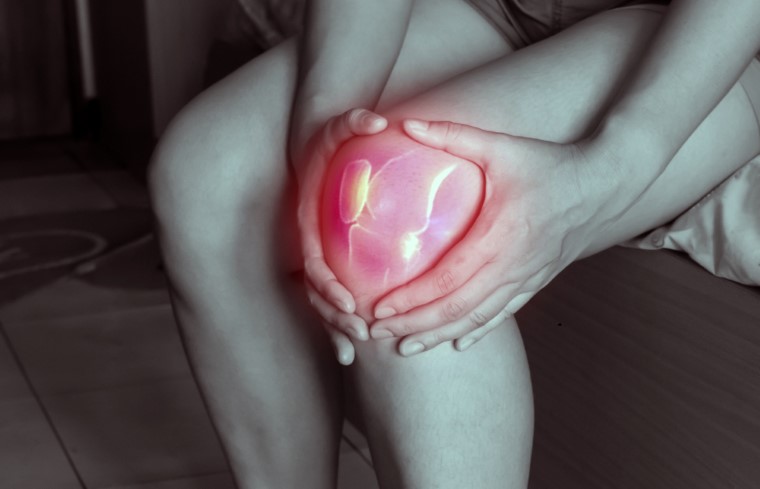
A MAKO robotic-assisted partial knee replacement can help relieve you of the long-term pain you’ve been suffering from.
What causes the need for surgery?
Osteoarthritis is the most common reason for traditional knee replacements but they also may be required after injury, or if you’re suffering from rheumatoid arthritis. The pain is usually caused by the joint cartilage gradually wearing away. If all 3 main compartments of the knee have been damaged, it’s likely your surgeon will recommend a MAKO total knee replacement as opposed to a MAKO partial knee replacement.
Indications you need MAKO robotic knee surgery
If you’re suffering from the below, it’s a good indication you could benefit from a MAKO robotic-assisted joint replacement:
- Severe knee pain or stiffness resulting from: noninflammatory degenerative joint disease (including osteoarthritis, traumatic arthritis, or avascular necrosis), rheumatoid arthritis or post-traumatic arthritis
- Those who haven’t experienced adequate relief with conservative treatment options, like bracing, medication or joint fluid supplements
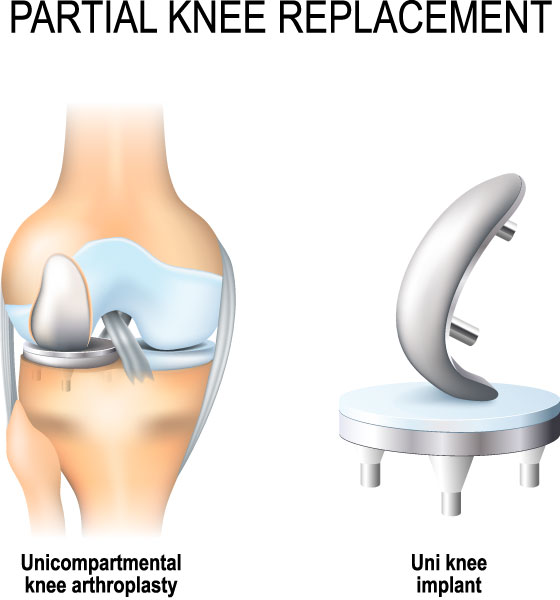
The MAKO technology has proven to be extremely effective when carrying out a robotic-assisted partial knee replacement.
Benefits of MAKO robotic-arm assisted surgery in Melbourne
There are numerous benefits of the MAKO robotic-arm assisted technology:
- In laboratory studies, surgeons execute their surgical plans more accurately
- The accuracy of component positioning is improved
- In a clinical study, the technology protected soft tissue and ligaments from damage
- In a clinical study, patients surveyed 6 months after surgery reported lower pain scores than those who received a conventional joint replacement
- In a clinical study, patients surveyed 6 months after surgery reported better patient satisfaction scores compared to those who received a conventional joint replacement.
How does both a MAKO total and partial knee replacement surgery in Melbourne work?
If you choose to have your MAKO total or partial knee replacement surgery with us in Melbourne, this is what you can expect:
The first step is patient-specific surgical planning. Before surgery, a CT scan of your knee is taken to develop a 3D virtual model of your unique joint. Dr Chandrasekaran’s team uses this model to evaluate your bone structure, disease severity, joint alignment and even the surrounding bone and tissue, to determine the optimal size, placement and alignment of your knee implant.

Throughout your procedure, MAKO provides real-time data to Dr Chandrasekaran. This allows him to continuously assess the movement and tension of your new joint, and adjust your surgical plan if desired.
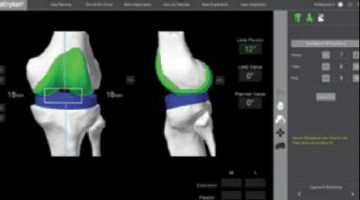
In the operating room, Dr Chandrasekaran guides MAKO’s robotic arm to remove the arthritic bone and cartilage from the knee. A virtual boundary provides tactile resistance to help him stay within the boundaries defined in your surgical plan.

With the diseased bone gone, your knee implant is placed into the knee joint. Then it’s off to the recovery room to begin your journey to strengthening your new joint.
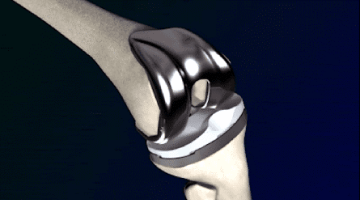
How much does MAKO robotic surgery cost in Melbourne?
The total cost of a MAKO knee replacement will depend on the extent of the damage to your knee and whether you require a total or partial knee replacement. Dr Chandrasekaran will be able to provide full details of the total cost to you at your initial consultation.
Why choose MOATI for your surgery?
We understand that making sure you know exactly what to expect from your MAKO joint replacement experience is important to you. That’s why we ensure that we work closely with you, to devise the most effective personalized pre-operative plan suited to your individual needs and to make sure you’re fully aware of all aspects of the procedure.
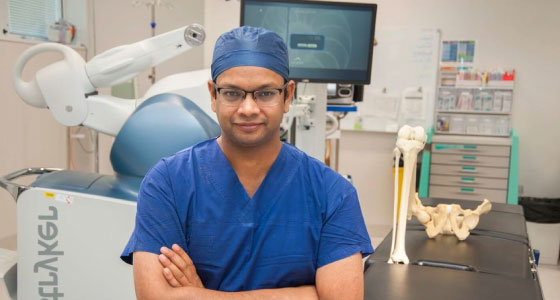
Dr Siva Chandrasekaran
Dr Chandrasekaran is a highly regarded and extremely experienced orthopaedic surgeon. He is a specialist when it comes to MAKO knee surgery, having carried out hundreds of procedures over the years and having numerous articles published on the subject.
Above all, Dr Chandrasekaran is committed to caring for each patient as if they were a professional athlete. He uses the same meticulous approach to ensure all patients can return to their regular, daily activities as quickly as possible.
FAQs
If you have any more questions regarding MAKO knee replacement surgery in Melbourne, please don’t hesitate to contact us today. Our most frequently asked questions below may also provide you with the additional information you’re looking for.
Any surgical or invasive procedure carries risks, but both MAKO total and partial knee replacement surgeries are considered very safe.
Due to the enhanced accuracy and additional data that the computer provides, robotic-arm-assisted surgery can be considered as an even better alternative to traditional surgery.
There are very few disadvantages of using the MAKO technology for surgery. The main one is that surgical time is likely to be slightly longer, potentially exposing patients to a greater risk of infection, but this is very unlikely.
Absolutely not. MAKO replacements can only be performed by orthopaedic surgeons who have completed the strict training requirements and are accredited to use the MAKO robot.
As the technology is fairly new, there is no evidence to determine if the replacements will last longer than the typical 10-15 years.
